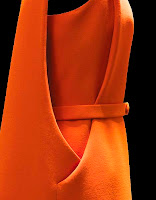Eurovision. That perennial scoffed-at
schlock-fest that I remember so well, which used to include Israel (Europe? even as an
ignorant, self- conscious teen I knew the difference). 1984. Representing
Spain, the group Bravo singing “Lady, lady”.
“Lady,
lady, lady se pinta los ojos de azul…” A description of a sad old lady who
resists, or rather denies, the ravages of time by brushing blue eye shadow on
her wrinkled lids. A typically catchy-á la Eurovision- song which did score an
honorable forth place, if you were wondering, and made that line a famous one
here in Spain.
Last week, somewhere in the not sunny bit
of Spain, 2013. An old lady in the line of the supermarket cashier. Dated blue
eye shadow. Three wide monochrome brushstrokes: brow bone, mobile eyelid, and
just for good measure, the under-the-eye bag. Yeah, bring it on. Very touching,
really. Just like the lady depicted in the Bravo song. I could not keep my own
eyes off her. And she smiled that crafty smile. I think I must be sounding very
nostalgic lately but I can’t help it, it was such a great color. It also came
in turquoise green. Maybe 40 years ago, they were the only colors available or
perhaps just the most popular among the women of Spain.
In defense of azul I would say that it has been a very sought after color since
ancient times. The color blue is scarce
in nature and it was historically a very expensive pigment when used in
textiles. It differentiated social classes by the choice of their garments.
Most of it came from the semiprecious minerals lapis lazuli or malachite,
which comes in green tones too. Hence the blue-green pairing of the Spanish eye
shadows, I would say!
Not until indigo was brought from the
Indies did blue become a more affordable pigment choice. The leaves of the
indigo are liquid-processed and a deep blue (añil in Spanish) is extracted. Vegetable versus
mineral-based hues.
The question is, why was the blue eye
shadow so popular in Spain? Maybe because most Mediterranean women have
dark brown eyes and seek the unattainable blue? Because it makes for a nice
contrast? Or was it just a matter of availability at the time? Some things defy
Googling….
Nowadays one rarely sees that kind of blue
out there which is a shame. It is a fantastic color. I tried it a few times and
it looks great. Only if you are like the lady in the song you should avoid it,
or, hold on, no way… just wear it if
you like it!































